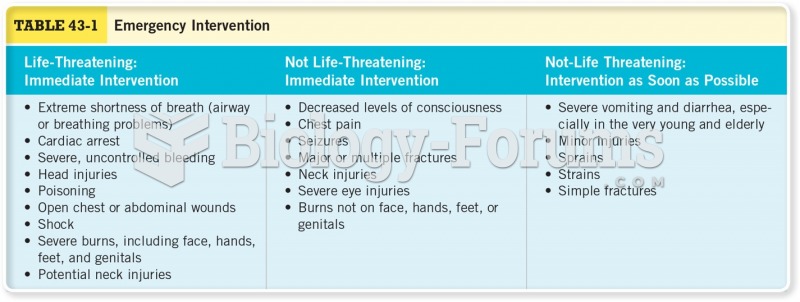This topic contains a solution. Click here to go to the answer
|
|
|
Did you know?
Atropine, along with scopolamine and hyoscyamine, is found in the Datura stramonium plant, which gives hallucinogenic effects and is also known as locoweed.
Did you know?
The most destructive flu epidemic of all times in recorded history occurred in 1918, with approximately 20 million deaths worldwide.
Did you know?
Illicit drug use costs the United States approximately $181 billion every year.
Did you know?
Most women experience menopause in their 50s. However, in 1994, an Italian woman gave birth to a baby boy when she was 61 years old.
Did you know?
Approximately 500,000 babies are born each year in the United States to teenage mothers.
 Incentive spirometry. A portable incentive spirometer is useful for encouraging patients to exercise
Incentive spirometry. A portable incentive spirometer is useful for encouraging patients to exercise
 James A. Garfield lies mortally wounded. After failing to locate the bullet, surgeons called in Alex
James A. Garfield lies mortally wounded. After failing to locate the bullet, surgeons called in Alex
 To prevent ignition and fuel-injection operation while the engine is being cranked, remove both the ...
To prevent ignition and fuel-injection operation while the engine is being cranked, remove both the ...




